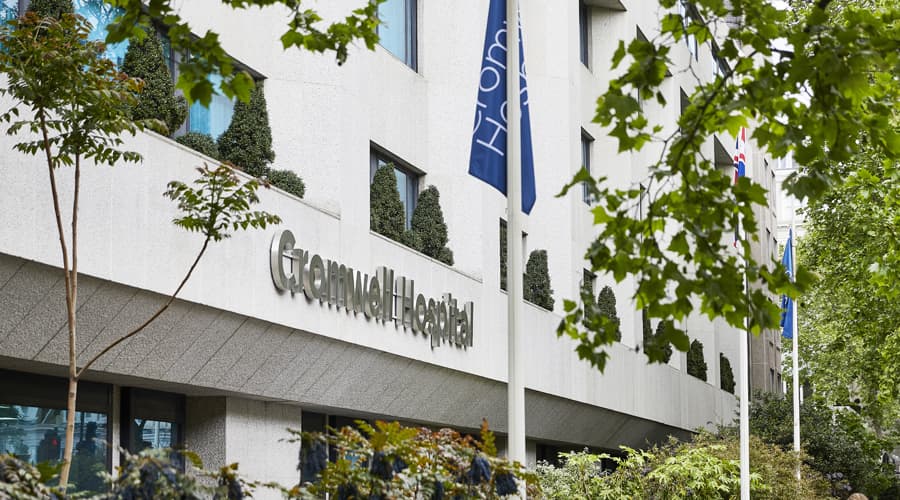Selective internal radiation therapy (SIRT)
Selective internal radiation therapy (SIRT) is a type of radiotherapy used to treat cancerous liver tumours that can’t be removed through surgery.
At a glance
Who's it for?
People with liver cancer who have tumours that can’t be removed through surgery.
What's involved?
Tiny radioactive beads are inserted into an artery that carries blood to the liver – the radiation from these beads destroys the cancer cells.
What's recovery like?
Most patients stay in hospital for one night following the procedure.
What is selective internal radiation therapy?
Selective internal radiation therapy (SIRT) is a type of internal radiotherapy used in patients with liver tumours, usually as a result of primary or secondary liver cancer.
SIRT is a form of cancer treatment that uses radiation to destroy cancerous tumours. It is used in patients who have liver tumours that cannot be removed through surgery.
SIRT uses very small radioactive beads called microspheres, which are injected into the main artery of the liver using a long, thin tube (catheter). The radiation from the beads helps destroy the cancerous cells, as well as blocking blood supply to the tumour. SIRT is often combined with chemotherapy treatment for maximum benefit.
There are several benefits to SIRT:
- Liver tumours are targeted directly without damaging the surrounding healthy liver tissue
- SIRT delivers a greater dose of radiation over a longer period of time than an external radiotherapy treatment would
- SIRT does not require surgery or general anaesthesia.
SIRT treatment is offered by our Integrated Cancer Campus.
Before you undergo SIRT, you must have several imaging procedures to ensure that the SIRT beads will travel into the correct area of the body.
Planning angiogram
An angiogram is an imaging procedure that provides your consultant with a detailed view of the blood supply to your liver. If required, your consultant will block off surrounding blood vessels that lead to other areas of the body – this is so that the SIRT beads cannot travel and damage healthy tissues. This does not harm the areas that are closed off.
Lung shunting scan
Once the consultant has assessed the blood vessels – and, if required, blocked off some of them – they will inject a radioactive tracer into your bloodstream. A lung shunting scan, almost known as a SPECT CT, is performed to show your consultant where the tracer is within the body, particularly in the lungs. This lets your consultant know whether it’s safe to proceed with your SIRT treatment.
SIRT
SIRT treatment is performed one to two weeks after your angiogram and lung shunting scan.
Your consultant will slowly inject radioactive beads called microspheres (or SIR-Spheres) into an artery that carries blood to the liver. The beads are injected through a long, thin tube called a catheter.
The radioactive beads become trapped in the smaller blood vessels within the liver, where they can destroy the cancerous cells. The beads are at their most radioactive during the first two days of placement. The beads remain permanently within your liver but do not cause any problems.
You will have a scan the day after the procedure to check the beads are in the correct position.
You will need to stay in hospital for one night following the procedure. A scan will also be required the day after your procedure to check the microspheres are correctly positioned in your blood vessels.
Further follow-up appointments include:
- A blood test one week after treatment, and every five weeks following
- A follow-up appointment with your consultant two weeks after treatment
- A CT scan of the thorax, abdomen and pelvis six weeks after treatment.
Radiation safety after SIRT
The microspheres used during treatment may make your bodily fluids temporarily radioactive. For this reason, safety measures must be taken to avoid contaminating others.
For 48 hours following your procedure, you will be required to flush the toilet twice after every use and avoid sharing a bed. You may also be advised to avoid contact with pregnant women.
For most patients, the side effects of SIRT are minor and should go away after three weeks. These may include:
- Reduced appetite
- Feeling sick
- Tiredness
- Pain or pressure in your abdomen.
Why choose us for SIRT?
World-leading experts
Our highly experienced radiologists are leaders in their field, having trained at London’s top teaching hospitals.
Rapid access to treatment
Start your treatment for liver cancer faster at our private hospital in west London.
Flexible payment
We welcome both self-paying and insured patients, as well as those sponsored by Embassies.
Paying for your treatment
We welcome both self-paying and insured patients.
Self-pay patients
We offer several ways for patients to self-pay, including pay-as-you-go and self-pay packages.
Insured patients
At Cromwell Hospital, we accept private health insurance from most major providers, including AXA, Aviva, Bupa, and Vitality.
Our locations

Book an appointment today
Call us now for appointment bookings, general queries, and personalised quotes.
Alternatively, you can contact us using our online form.
